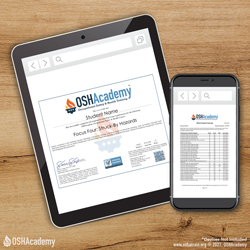Introduction
Welcome to Focus Four - Struck-By Hazards for the construction industry. This is the third course covering the hazards described in our Construction Focus Four Hazards series. Please be sure to complete the series by also taking courses 806, 808, and 809. The Focus Four Hazards series was developed in support of the Occupational Safety and Health Administration (OSHA) Construction Outreach Program's effort to help educate workers in the construction industry about:
- understanding the hazards they face; and
- knowing what their employer's responsibilities are to protect workers from workplace hazards.
Construction is among the most dangerous industries in the country and construction inspections comprise 60% of OSHA's total inspections.
- In 2013, preliminary data from the Bureau of Labor Statistics indicate that there were 796 fatal on-the-job injuries to construction workers - more than in any other single industry sector and nearly one out of every five work-related deaths in the U.S. that year.
- Also in 2013, private industry construction workers had a fatal occupational injury rate nearly three times that of all workers in the United States: 9.4 per 100,000 full-time equivalent construction workers vs. 3.2 for all workers.
Given current OSHA and industry information regarding construction worksite illnesses, injuries and/or fatalities, students that complete this course will be able to recognize fall hazards, caught-in or-between hazards, struck-by hazards, and electrocution hazards (focus four hazards) employees face in the construction industry.
Course Objectives
| ID | Objective |
|---|---|
| TO 1.0 | Achieve a minimum score of 70% on the final course assessment. |
| LO 1.1.1 | Define "struck-by" hazards, discuss statistics of struck-by accidents, and give examples of each of the four categories of struck-by hazards. |
| LO 1.1.2 | Describe the hazards of struck-by falling, flying, swinging, and rolling objects, and give examples. |
| LO 1.2.1 | Describe employer responsibilities and employee best practices to prevent struck-by accidents when operating heavy equipment and motor vehicles. |
| LO 1.2.2 | Describe employer responsibilities and employee best practices associated with operating tools and equipment. |
| LO 1.2.3 | Describe personal protective equipment associated with the use of heavy equipment, motor vehicles, and tools and equipment. |
| LO 1.2.4 | Describe employer responsibilities associated with providing safety education to employees operating heavy equipment, motor vehicles, and tools and equipment. |
Key: Terminal Objective (TO), Learning Objective (LO)



